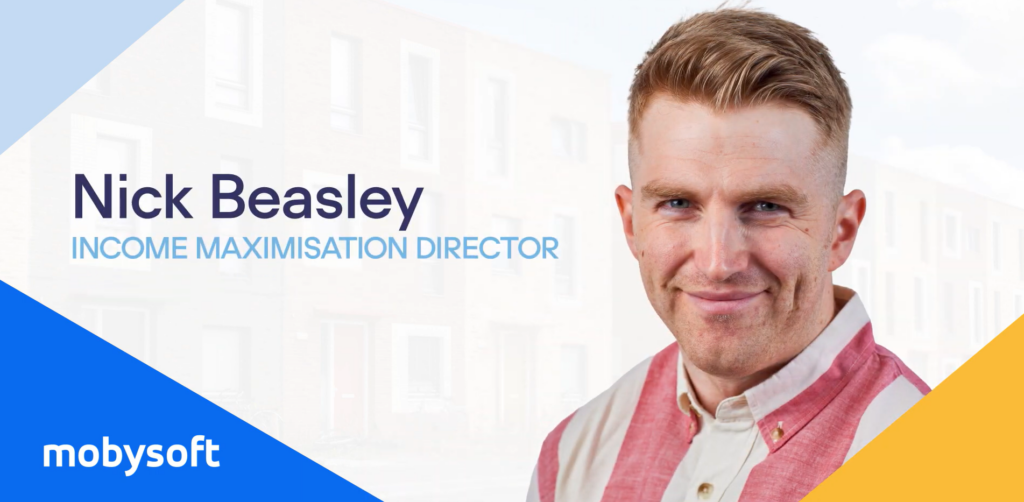Social Housing 2025: The Experts Predict What’s Next
As we step into the new year, many in the social housing sector are taking stock of what was undoubtedly a challenging 2024. A new government, increased legislation in the form of tenant satisfaction measures, and the imminent implementation of Awaab’s Law have placed compliance front and centre for social housing providers. The sector is also grappling with the rising need for robust data strategies to underpin new technologies like AI and to harmonise disparate data streams, forming a holistic customer view. This approach is quickly becoming essential for delivering efficient and effective services in an increasingly complex environment.
With these pressing issues in mind, we’ve once again asked our in-house experts to share their insights and predictions for the year ahead in our annual feature, Social Housing 2025: The Experts Predict What’s Next. What challenges might the sector face in the coming months, and how can providers adapt to navigate them successfully? Read on to find out…

Temporary accommodation has surged over the past decade, and I expect this trend to continue into 2025. Despite political promises to reduce the number of households in temporary accommodation and the associated costs, resource-strapped local authorities face an uphill battle. Until housing supply meets demand and funding keeps pace with rising costs, this issue is unlikely to improve. The growing gap between benefit caps and actual costs only exacerbates the situation, making private investment and closer partnerships with private institutions potential avenues for much-needed solutions.
Meanwhile, regulation and its impacts are set to intensify further in 2025. We’ve already seen increased scrutiny, gradings, and Ombudsman reports throughout 2024, as anticipated. While housing providers are making significant strides in areas such as safety, decent homes, amplifying the customer voice, and delivering real community impact, these efforts come at a cost. Rising expenditures, tighter margins, and decreased surpluses are creating financial pressures that may lead to more private financing arrangements – often linked to metrics – and a rise in sector mergers.
One positive development I’m observing is a growing focus on the effective use of data. Historically, social housing providers have been data-rich but insight-poor, but this is starting to change. Local authorities and housing associations are becoming more open to new ideas, collaborations, and technologies to unlock the potential of their data. By integrating datasets, partnering with external providers, and leveraging tech and data specialists, organisations can offer more proactive services, empower their teams to make informed decisions, and tailor solutions to meet the unique needs of their residents.
– Nick Beasley

In 2025, social housing providers will continue to face significant challenges, including tackling damp and mould, improving customer satisfaction, navigating the managed migration to Universal Credit, and pursuing new build opportunities. Effectively addressing these issues will require a proactive and resident-focused approach. Clear, consistent communication with tenants will be key, alongside efficient processes for managing repairs—particularly recurring problems – and addressing complaints promptly. Establishing a robust review system will ensure that recurring issues are identified and resolved sustainably. Providers must also prioritise the collection of relevant household information to deliver tailored services that enhance tenant satisfaction and build stronger relationships.
The managed migration to Universal Credit poses an ongoing risk to income streams. Engaging with tenants early in the process will be crucial to ensuring they understand how their claims will work and the importance of meeting rent payment obligations. Early intervention and support will help mitigate potential financial risks for both tenants and providers.
On the development front, delivering new homes remains an uphill battle. High construction costs, land scarcity, complex planning regulations, and limited funding continue to hinder progress. Adding to these challenges are labour shortages, stricter sustainability requirements, and ongoing economic uncertainty, all of which make it increasingly difficult to deliver affordable housing projects on time and within budget. To overcome these barriers, providers will need to explore innovative solutions, strengthen partnerships, and advocate for more robust funding streams to support the delivery of much-needed housing.
– Liza Crowther

It’s no surprise that the collection and maintenance of clean, accurate data—and crucially, using that data effectively – will be key for the sector in 2025. With the current level of scrutiny on social housing, having robust data isn’t enough; providers must use it to improve services for tenants, enhance local neighbourhoods, and strengthen communities. Blending different datasets can enable organisations to make more informed decisions. For instance, understanding whether poor insulation or a failing boiler is making it difficult for a tenant to heat their home – and whether this is impacting their ability to pay rent- requires connecting the dots between repairs data, rent data, and tenancy management insights.
Intelligent decision-making that genuinely supports tenants will be critical in the year ahead. AI and automation offer great potential to drive efficiencies and improve outcomes, but the “human touch” remains irreplaceable. Caring, thoughtful, and supportive staff will continue to play a vital role, making the training and development of housing professionals a priority for 2025.
Meanwhile, financial pressures on low-income households remain acute. While benefits will be uprated by 1.7% in 2025, this modest increase does little to address the financial challenges faced by many tenants. Adding to the complexity is the final tranche of 1 million households transitioning to Universal Credit by winter 2025, which includes some of the most vulnerable tenant groups. Social landlords must prepare now to mitigate risks and support tenants through what could be a challenging 12 months ahead.
– Mark Walker

The introduction of Awaab’s Law continues to create uncertainty in the sector, with its exact scope still undefined. Many social housing providers are particularly concerned about the potential extension of the law to cover additional HHSRS hazards, such as overcrowding, which are often beyond their control. While we await finalised regulations, organisations are proactively refining their damp and mould processes to ensure they are resilient and ready for the forthcoming measures. At the same time, there is anticipation around the review of the current HHSRS protocol, which will likely introduce new guidelines for managing and mitigating hazards in homes and domestic buildings.
In addition, changes to the EPC certification scheme are expected, with officials proposing a new energy efficiency rating system. This could expand assessments to include fabric performance, heating systems, smart technology readiness, and energy costs. While these updates align with the Government’s green agenda and aim to lower tenants’ fuel costs, they also raise concerns. Many providers worry about increased costs associated with reducing the validity period of EPCs and the higher frequency of re-certification. These challenges could put additional financial strain on social landlords.
At Mobysoft, we are working closely with our clients to ensure our platform is fully compliant with Awaab’s Law and supports social landlords in proactively managing damp and mould issues. Our solution focuses on processes that help ensure cases are identified, managed, and resolved sustainably and effectively. We will continue to monitor regulatory developments to keep our clients ahead and help them navigate these changes with confidence.
Looking ahead, the proposed EPC changes, expected in 2026, bring opportunities as well as challenges. Grant funding, such as the Warm Homes: Social Housing Fund, is already available to help organisations improve homes and support tenants in heating them more efficiently. The new certification scheme offers a chance for landlords to gain deeper insights into their stock profiles, review planned works, and future-proof their properties. While any initiative to reduce tenant costs is welcome, it will require a robust and sustained funding stream to enable landlords to invest and address these critical issues effectively.
– Zoe La Brow

Market consolidation is set to continue in 2025, with more mergers likely on the horizon. Under increasing scrutiny, rising costs, and shrinking surpluses, many social landlords will look to achieve efficiencies through economies of scale. Mergers offer an opportunity to pool resources, streamline operations, and enhance resilience in the face of ongoing financial and regulatory pressures.
At the same time, the importance of data will only grow. Initiatives such as the Better Social Housing Review, Knowing Our Homes, and Making Every Contact Count all emphasize the need for better data collection and usage.
These efforts, combined with the expectations set by Tenant Satisfaction Measures, underline the sector’s drive to develop robust and effective data strategies. By leveraging accurate, actionable data, social landlords can deliver fairer and more equitable services to tenants. This shift isn’t just about compliance—it’s about shaping services in ways that truly reflect tenants’ needs, enabling providers to improve lives, enhance neighbourhoods, and build stronger communities.
– Adrian Mills
The insights shared by our experts underscore the significant challenges facing social housing providers in 2025, from financial pressures on tenants to the complexities of regulatory changes and housing delivery. Yet, one thing remains constant – social landlords continue to demonstrate resilience, innovation, and resourcefulness in navigating these obstacles. For organisations looking to leverage technology effectively, a strong foundation is key.
If your organisation is considering embarking on harnessing technological solutions such as AI to help with the challenges discussed within this article, you might want to start with our Introducing AI Into Your Organisation guide. And remember, implementing AI tools requires a robust data strategy – our Becoming a Data-Led Organisation guide provides practical advice on laying the groundwork. You can download the guide by either clicking this link or scanning the QR code on the image below.

- Social Housing 2025: The Experts Predict What’s Next - January 2, 2025
- This Month In Social Housing: November 2024 - December 3, 2024
- Leveraging AI in Social Housing: Building a Data Strategy for Enhanced Compliance and Efficiency - November 26, 2024